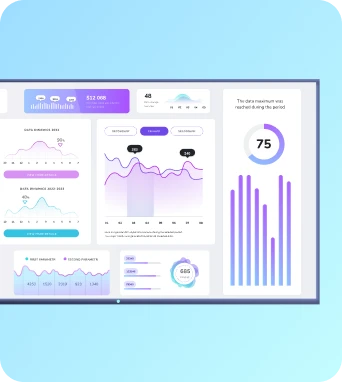Augmented Reality (AR) integration
Augmented Reality (AR) integration refers to embedding virtual content into physical environments and camera feeds and connecting those overlays to a digital signage system. In a Fugo.ai context it enables contextual graphics, data visualisations and interactive wayfinding to appear on TV dashboards, mobile devices and location-based screens for richer, real-time communications.
Augmented Reality (AR) integration
Technical integration and architecture
AR integration for signage can be implemented through several technical approaches, each suited to different hardware and operational constraints. Marker-based systems use QR codes or fiducial markers to anchor overlays and are simple to deploy on screens or printed surfaces, requiring minimal compute on the client. Markerless approaches rely on SLAM (simultaneous localisation and mapping), depth-sensing or GPS and are more flexible in open environments but demand more capable devices and careful calibration to maintain stable overlays. WebAR using browser APIs has become a pragmatic path for signage networks because it removes the need to install native apps on endpoints; WebAR clients can load AR scenes, fetch metadata and receive scheduled content from the CMS, making them straightforward to manage alongside traditional media players. From an architecture perspective, AR elements are best treated as a content layer managed by the signage CMS. Fugo.ai can host or reference AR assets, provide scheduling, and expose APIs or webhooks for client devices to request scene configuration and live data. Real-time data overlays often use lightweight JSON feeds or WebSocket connections to avoid polling latency. Edge computing or local caching reduces delays for high-frequency updates and supports offline resilience. Security considerations include controlling camera access, sanitising incoming data for overlays, and encrypting communication channels. Analytics are achieved by logging interaction events, marker detections and view durations with the CMS to measure engagement and inform iterative content improvements.
How it works with digital signage
Practical use cases and content strategy Subtopic 2: AR-enhanced signage opens practical use cases that amplify clarity and interactivity in workplaces and public spaces. In retail, AR overlays can place product information, reviews or stock levels directly above items on digital displays or tablet kiosks, creating immersive product demos without additional hardware. In office environments, AR can provide contextual dashboards that visually highlight meeting room occupancy, equipment status or safety zones by superimposing icons and KPI values over live camera feeds or floor plans. Wayfinding is a common application: AR arrows and turn-by-turn cues projected on mobile devices or glass panels guide visitors through campuses, shopping centres or large facilities with greater certainty than static maps. A deliberate content strategy improves adoption and accessibility. AR assets should be designed with legible typography, consistent visual language and fail-safe fallbacks so that essential information remains available when AR capability is absent. Content variation must account for viewing distance, screen size and device orientation; what works on a tablet may need simplification for a TV. Testing under real lighting and environmental conditions is essential to avoid jitter or occlusion. Measurement should combine traditional signage metrics with AR-specific signals such as marker recognition counts, interaction taps and dwell time to evaluate whether overlays improve task completion, reduce enquiries or increase conversion. For network operators, gradual rollouts with pilot sites and clear operational playbooks help embed AR features into everyday signage workflows without disrupting existing display fleets.
Use Cases and Benefits
Keep the learning going...
Audio zones
Audio zones are configurable areas within a digital signage network that control which displays and speakers output sound, allowing independent volume, content routing and scheduling per space. They help manage overlapping sound, comply with local policies, and deliver targeted audio experiences across multiple rooms, floors or outdoor areas.
Audit trail
A chronological, tamper-evident record of actions and events that shows who performed what, when, and where, used for accountability, compliance, and investigation.
Augmented reality product displays
Augmented reality product displays use AR overlays and interactive 3D models on digital signage and TV dashboards to present products in context. They allow viewers to examine scale, customise options, and access supplementary content in real time, helping retailers and internal communications teams improve engagement, reduce returns and support informed purchase decisions.



